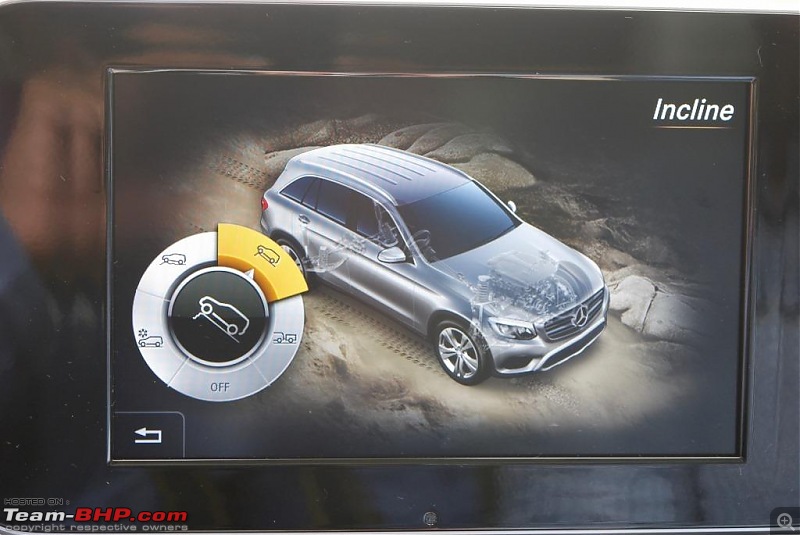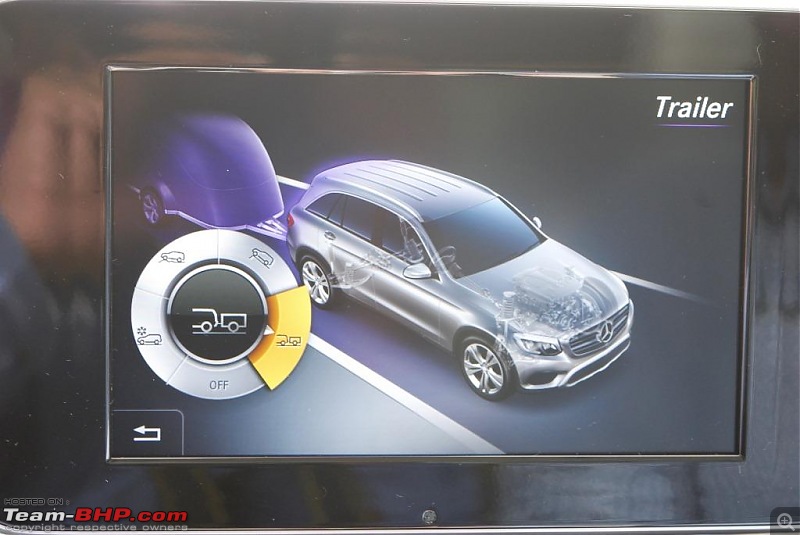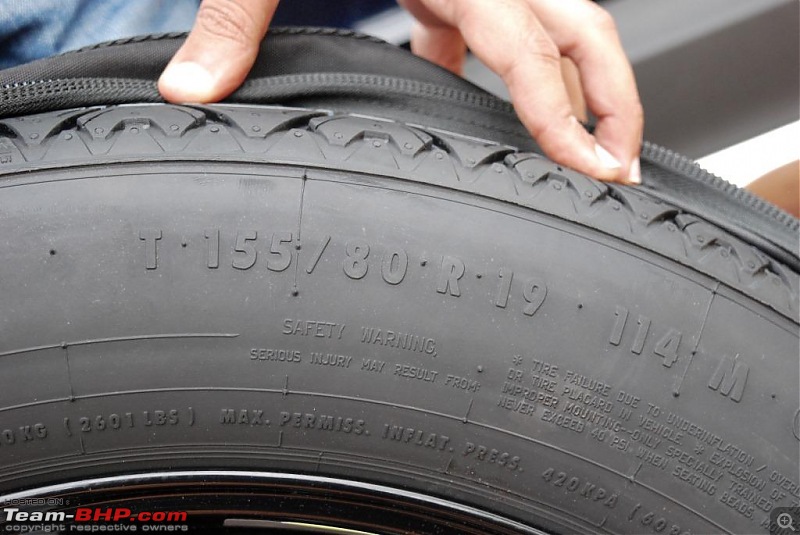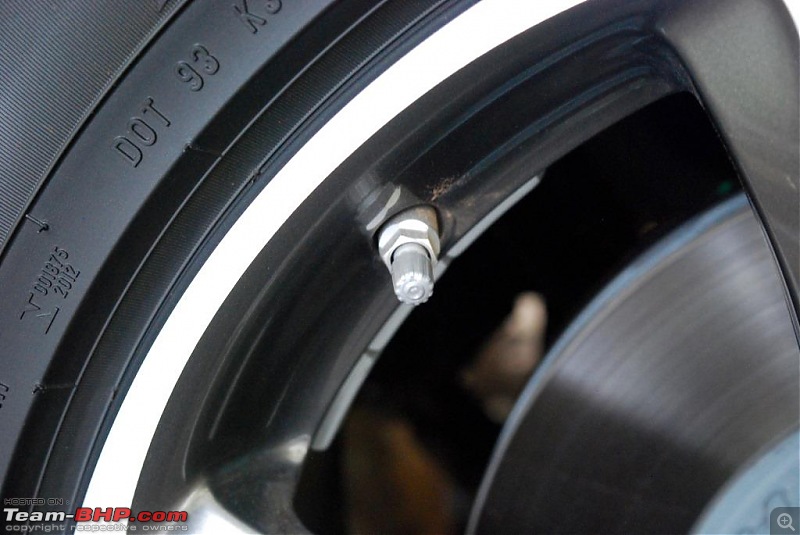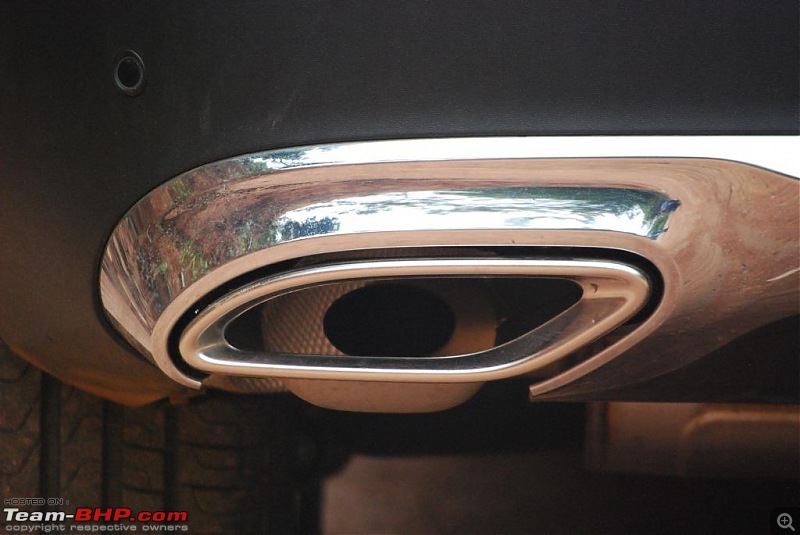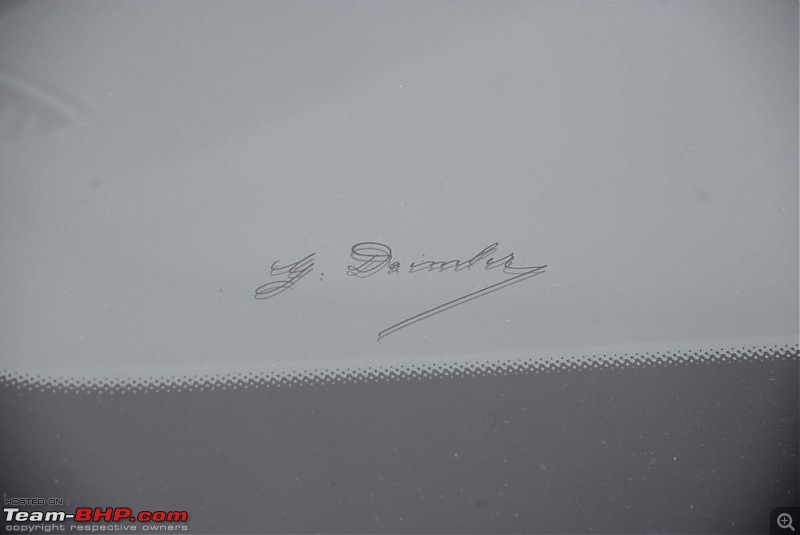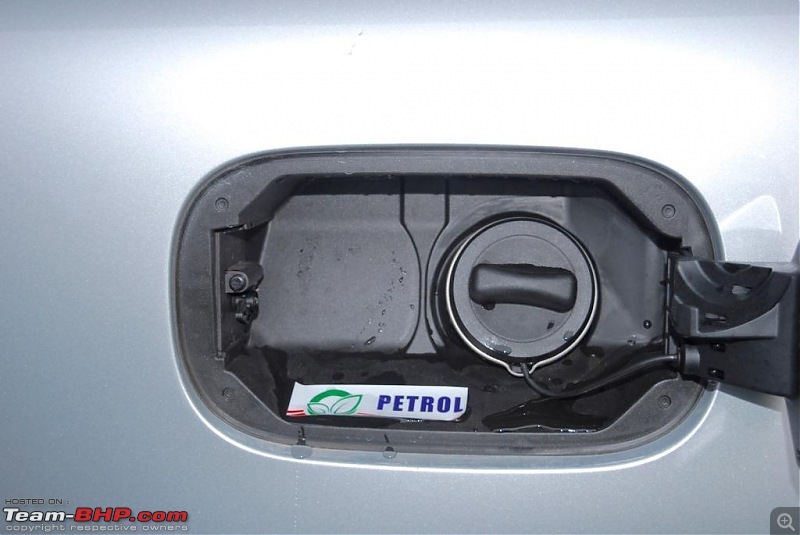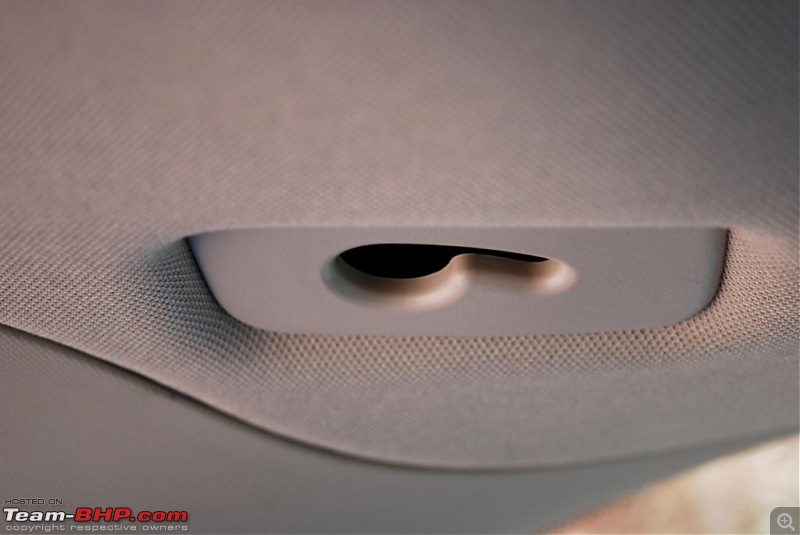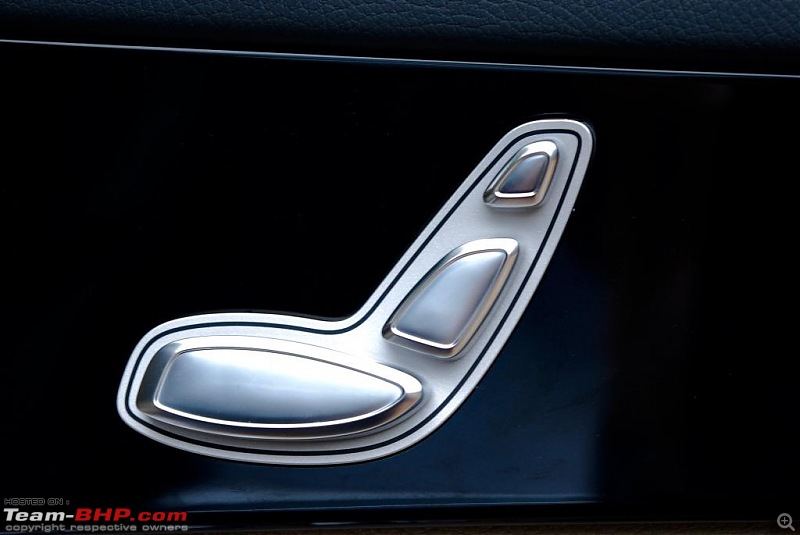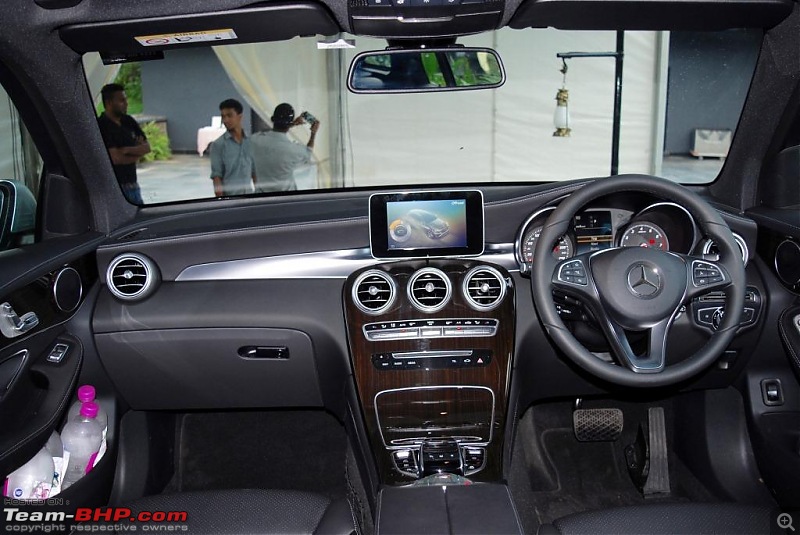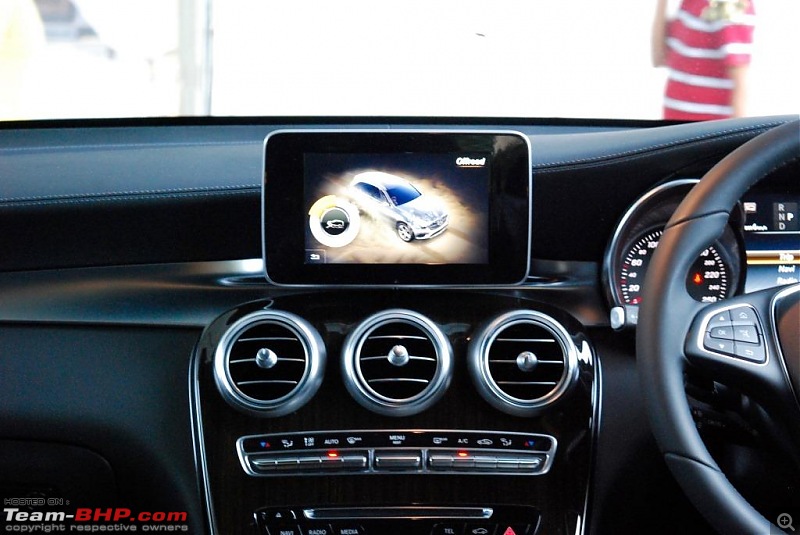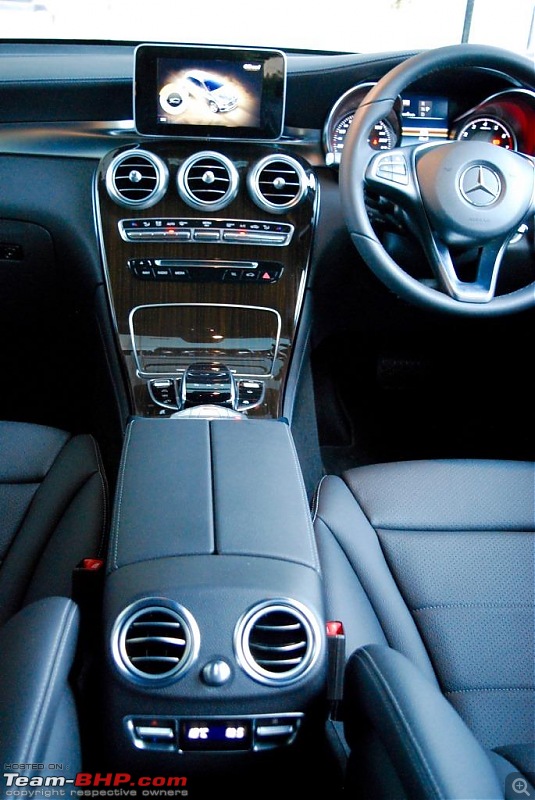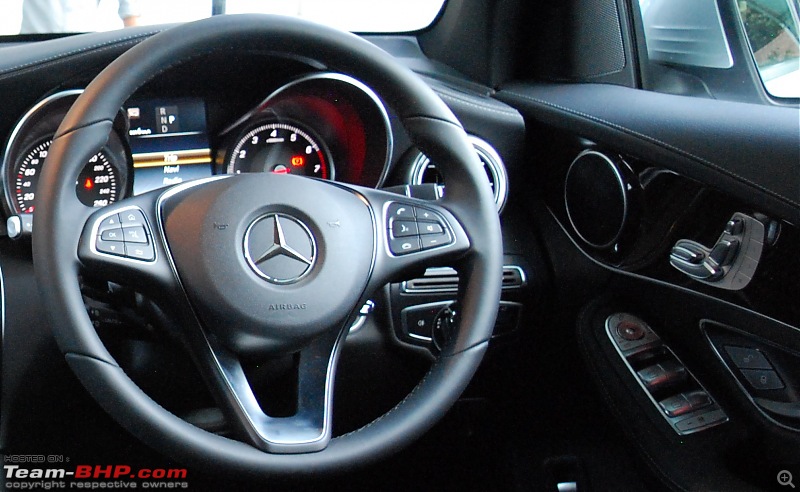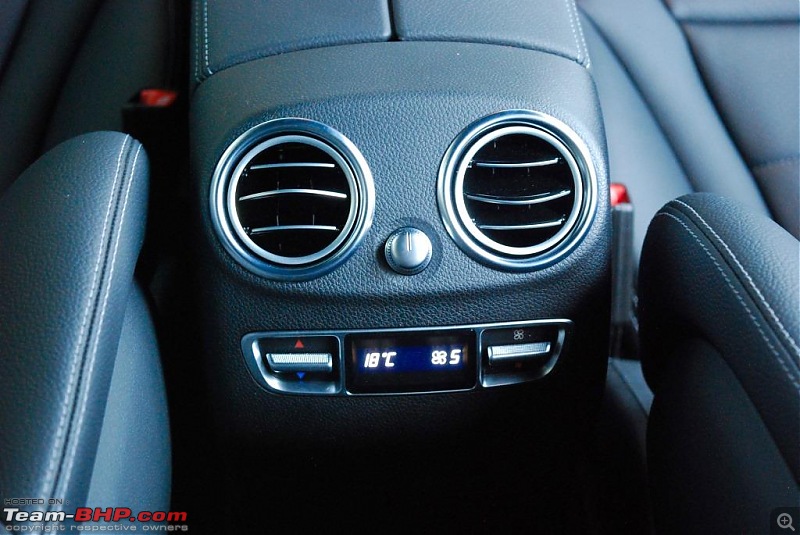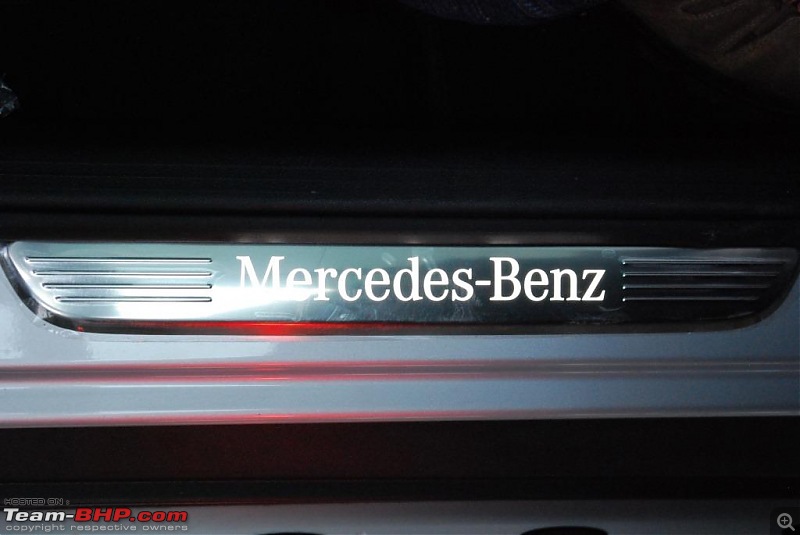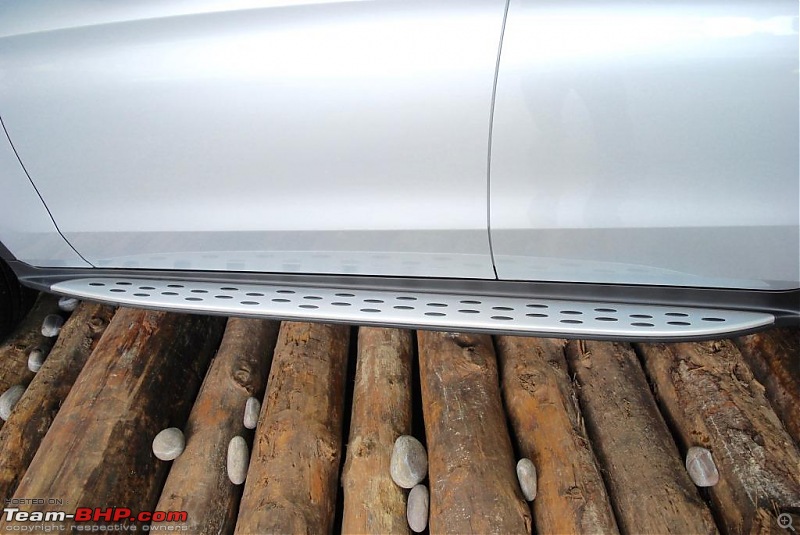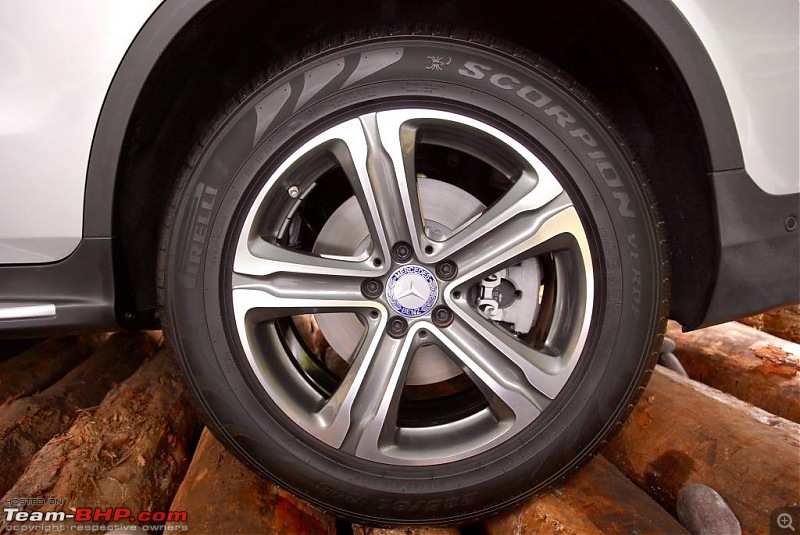Interior
Before we proceed, we must mention that we were given a homologation model, which is more representative of the forthcoming CKD version compared to the more well-appointed Edition 1 version that has been currently launched. More about this later.
If you have been inside the C-Class, you will feel at home with the interior and cabin layout of the GLC. The interiors are well-made and have a contemporary feel about them. We saw two interior colour schemes - black/beige and all black. In our personal opinion, the all black scheme looked more premium.
The front cabin layout is borrowed from the C-class sedan. The tablet style screen looks out of place and added as an afterthought. In today's time, one expects a tablet to be a touchscreen and this isn't:
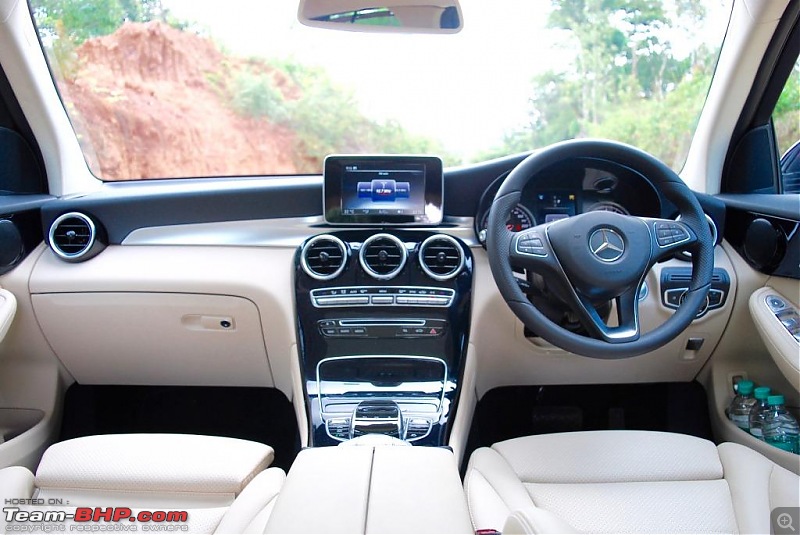
The panoramic roof gives the GLC's interiors a roomy feel. The front half of the roof slides up:
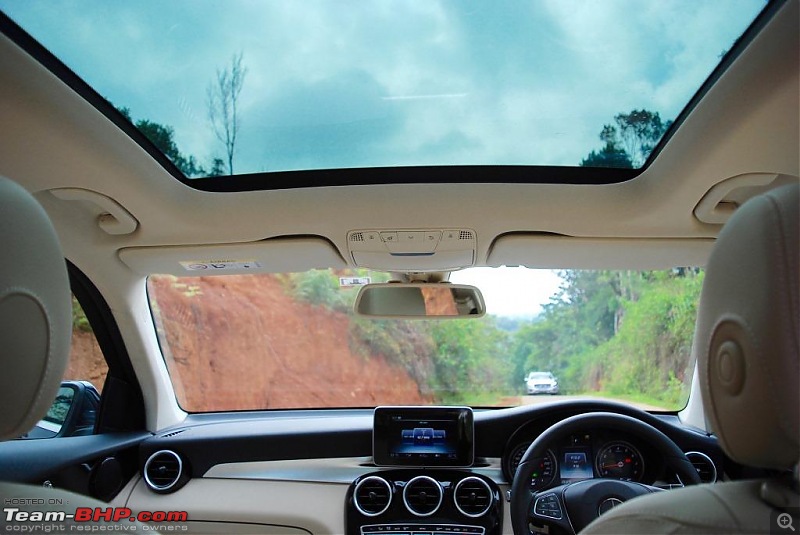
Nice, firm seats and easy to get your favourite seating position. The version we drove lacked memory functions for the front seats. They had electric adjustments for bottom & rear parts. The headrest & under-thigh support had manual adjustments unlike the Edition 1:
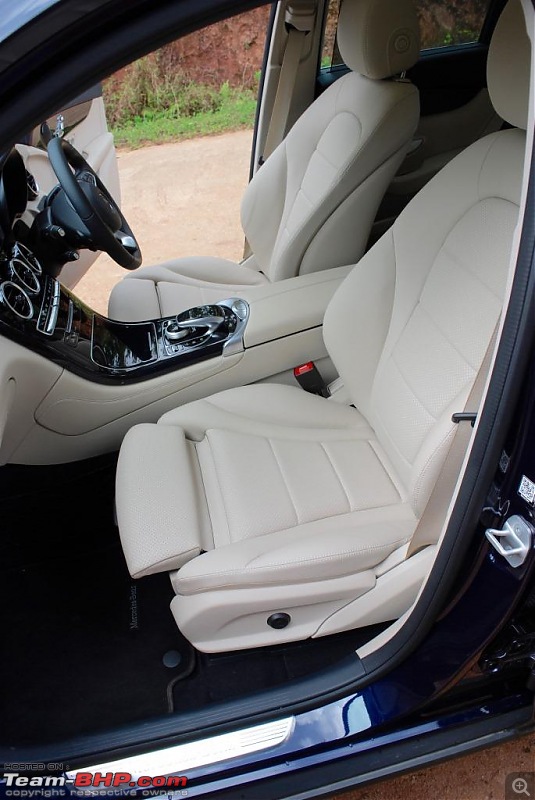
Rear seats are split in a 40:20:40 ratio:

Notice the absence of seatback pockets and climate control for rear passengers in the edition we drove:
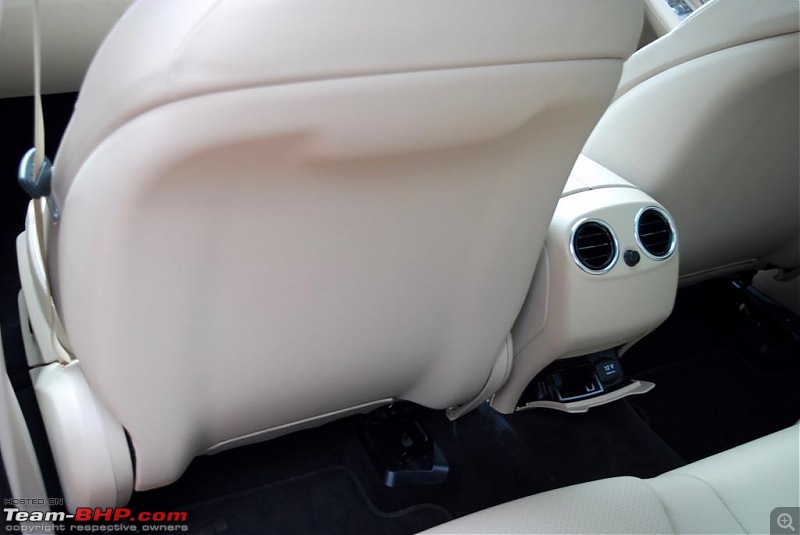
Nice, chunky steering wheel with a multitude of controls:

Manual adjustment for steering:
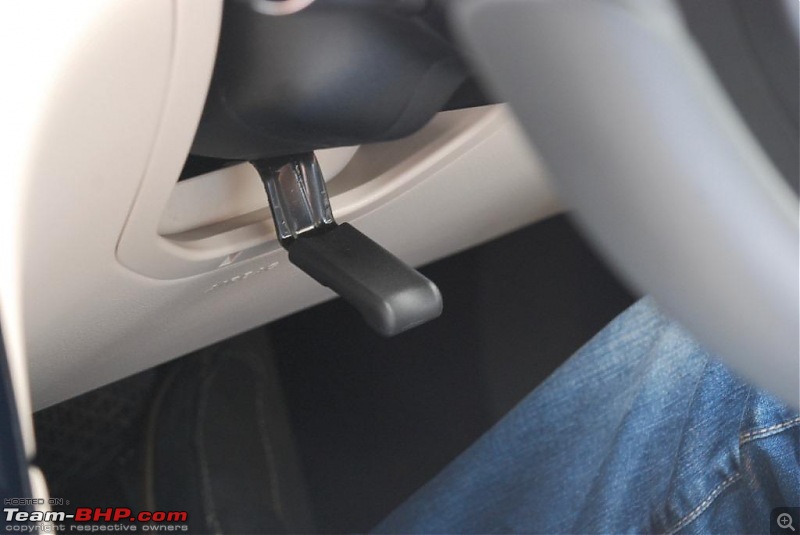
Paddle shifters & stalks for indicators & cruise control. This version misses an additional stalk for electric steering adjustment:
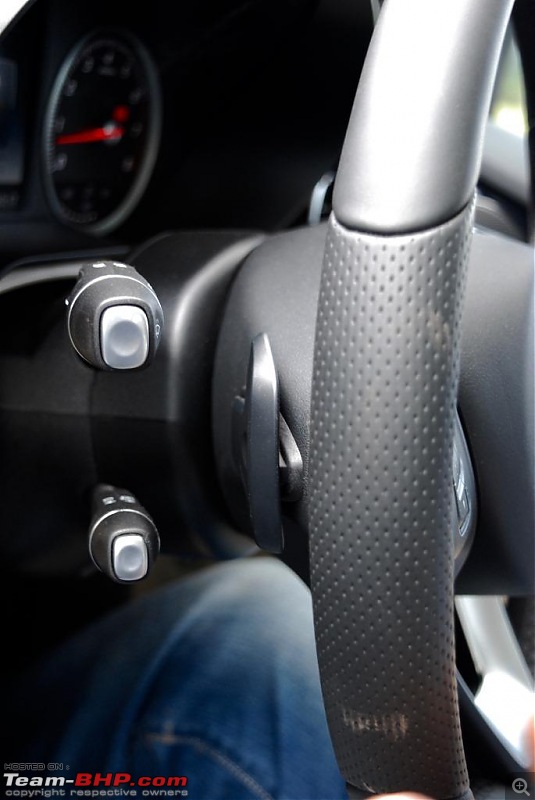
Classy looking air-conditioner vents. They have a nice weighted feel and center with a 'click' sound when adjusted. Turn the knob to open/close the vents:

The command control area with tactile feel roller buttons for drive select and volume. The M button puts the car in Manual mode. 'A' deactivates the Stop-Start mode. Other buttons are for switching off the tablet screen, traction control, and park distance control. The rotary dial lets you navigate through the options and pressing the dial selects the option. The same can be achieved by handwritten inputs using the pad on top. In our experience it was cumbersome to use and the rotary dial was more user-friendly:
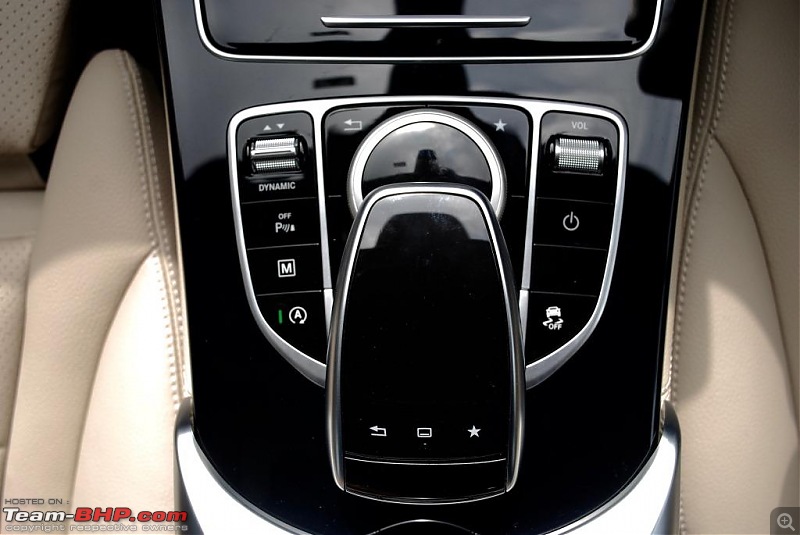
The left button takes the car directly to the off-road choice setting screen and the right button activates the descent speed regulator (Mercedes speak for Hill Descent Control). The center button opens up the armrest storage area:
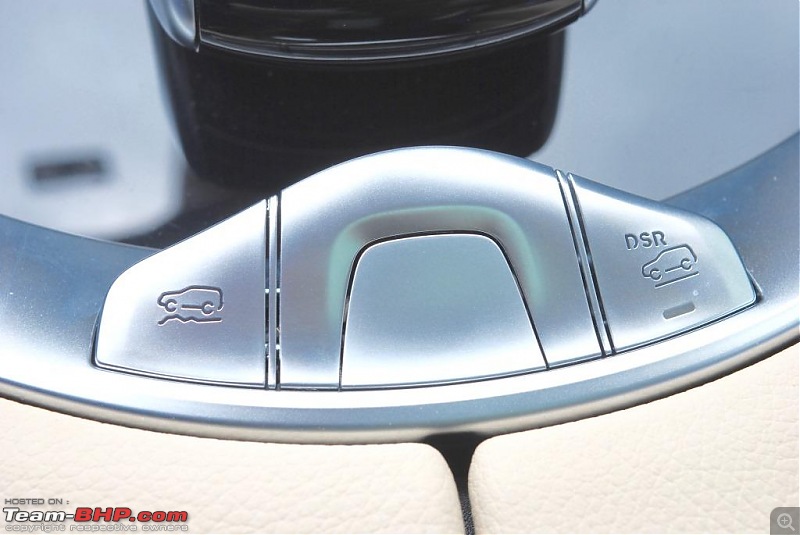
The front door has ample storage space and that is made possible by moving the audio components to the inside of the front cabin area/near footwell. The speakers are shifted up the door from the usual bottom half position. Notice the absence of 'memory function' for front seats in this variant:
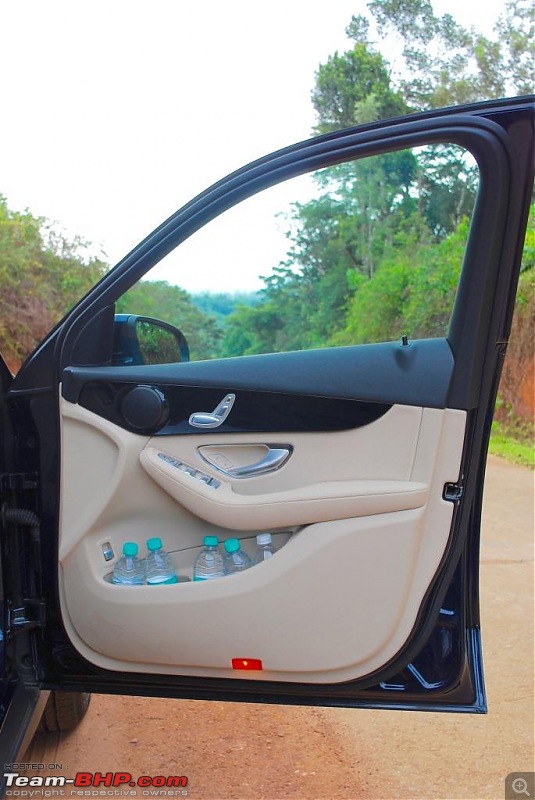
The armrest storage area has the usual USB slots. One each for driver & co-passenger:
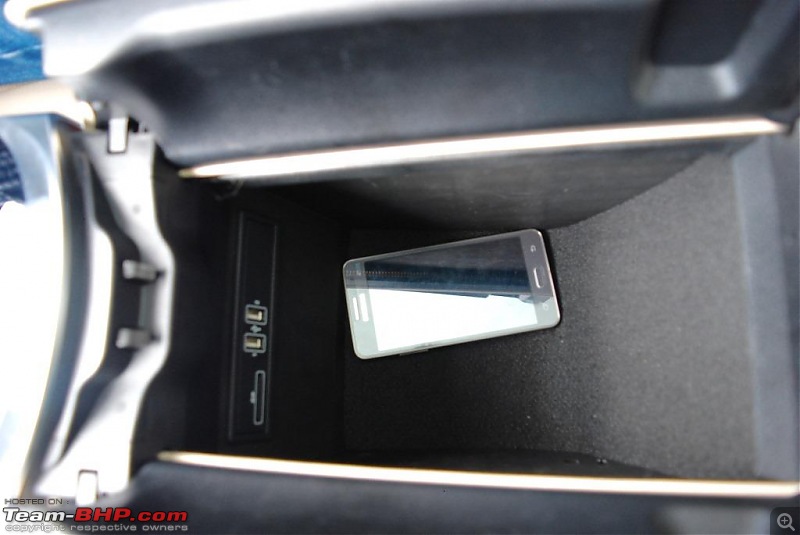
Driver footwell with the usual organ type accelerator pedal. Though there is space for dead pedal, it is not lined for grip:
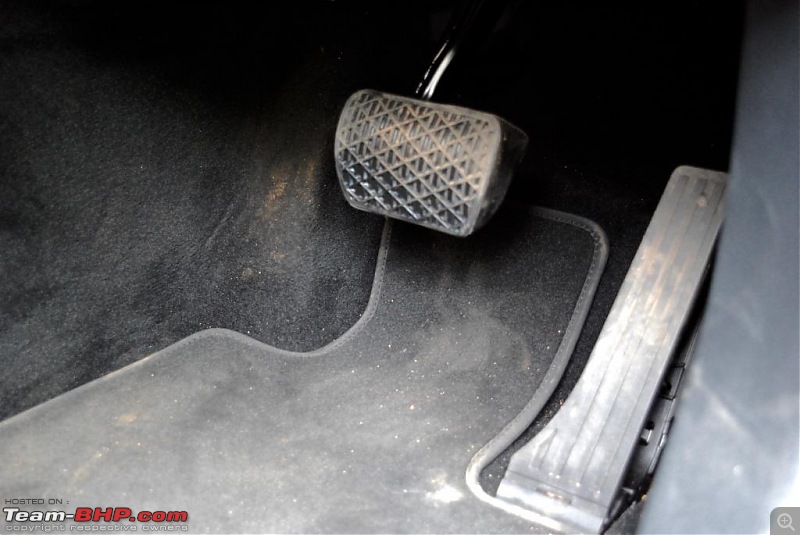
Aluminium scuff plate. In this variant, it is not illuminated:
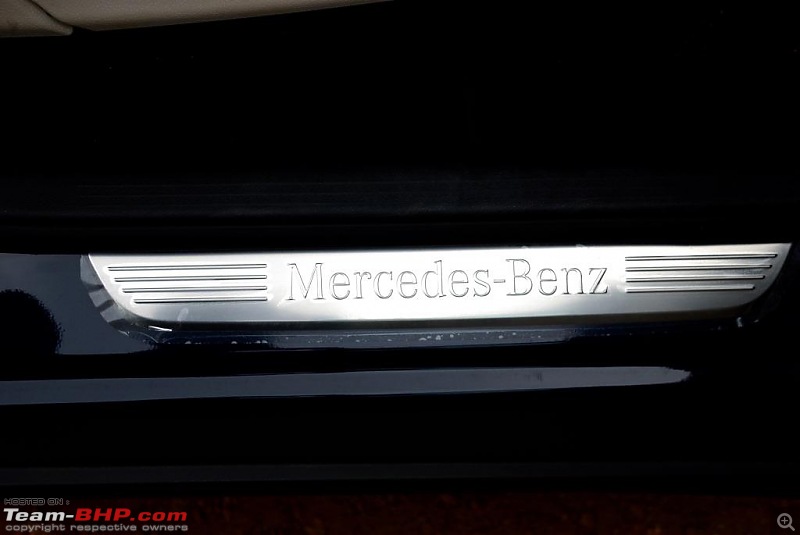
Fuse box in the passenger footwell area:
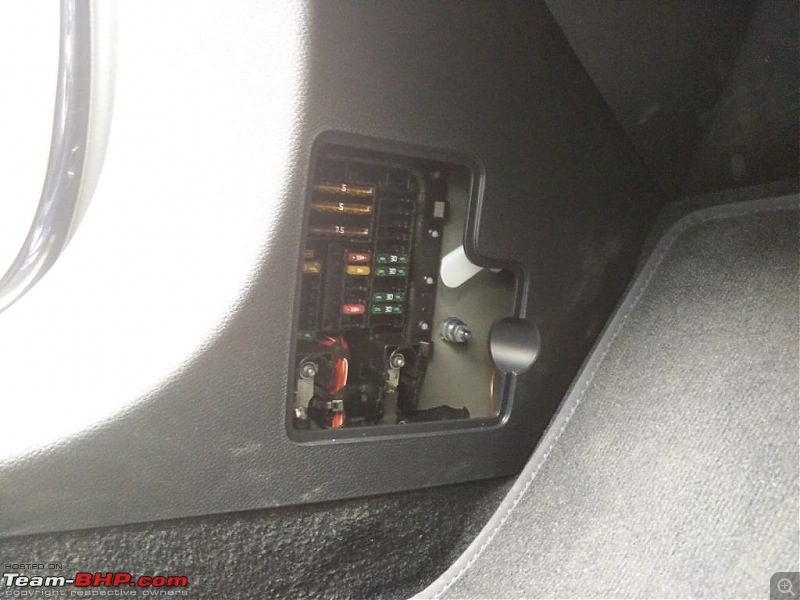
More than adequate rear space with the front seat set to my driving position:
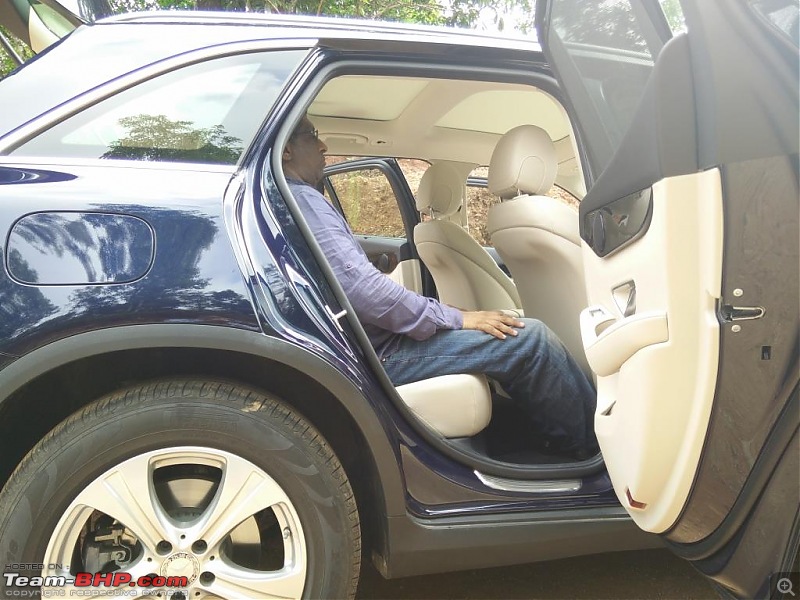
The rear boot area, according to the specifications provided, can swallow 550 liters of luggage. However, the usability of that space is severely compromised with the spare tyre. Not only does it eat up space, it also makes the rear area uneven in case you have to arrange lots of luggage pieces in the boot:
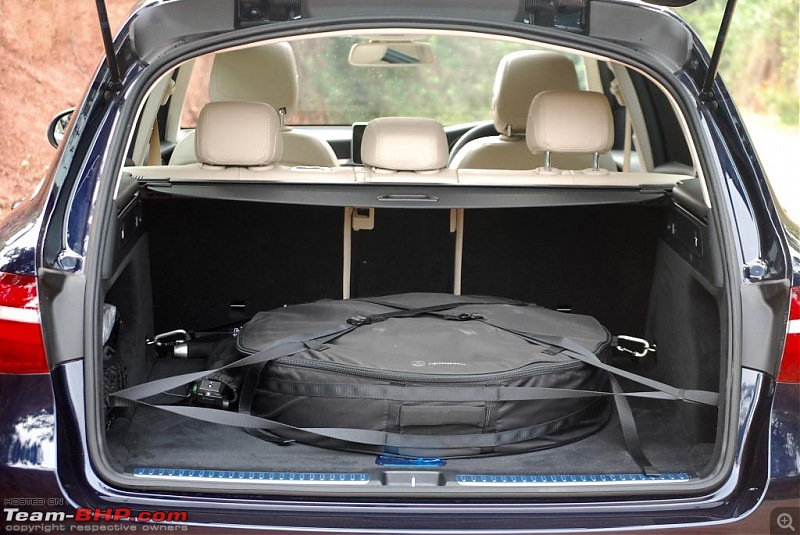
Rear space with the tyre out. BTW, it took us only 1.5 minutes to take the spare tyre out:
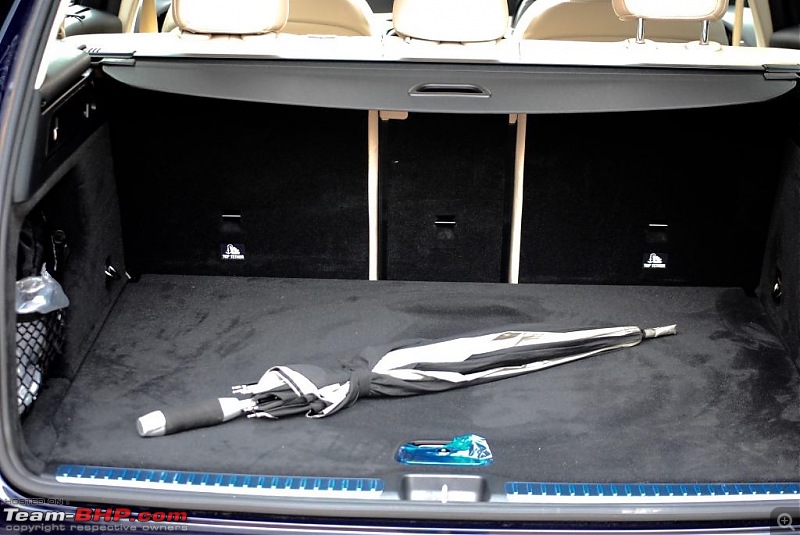
Luggage space with the rear seats folded. They can be folded by a press of a button in the boot and also from the rear seats/near the rear doors. The seats are split in a ratio of 40:20:40 making several luggage carrying and seating combinations possible. There are also cargo bars in the rear seats that alter the rear seat angle to release an additional 30 liters of luggage space (these were not present in the model we drove):

Provision to lock the rear boot floor:

Space under the boot floor to store stuff:
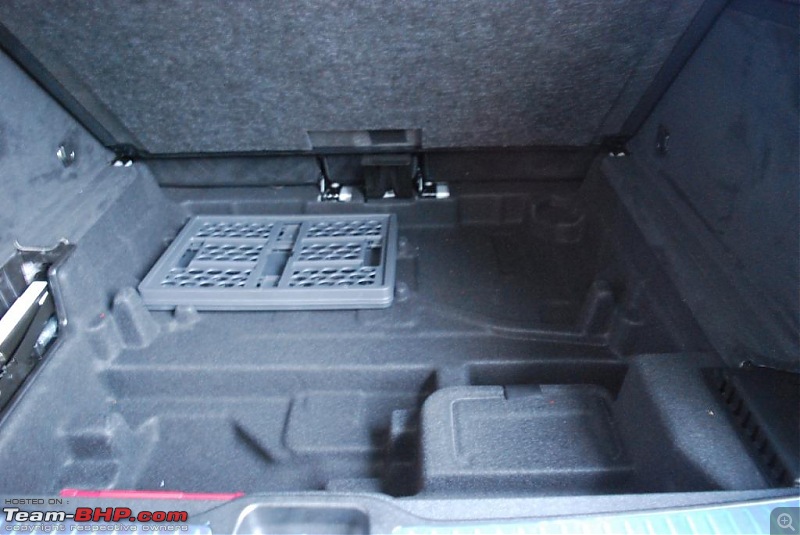
Gloves are provided as standard if you need to change tyre. Ironical that the spare tyre is kept on top and the gloves are hidden away under the floor:
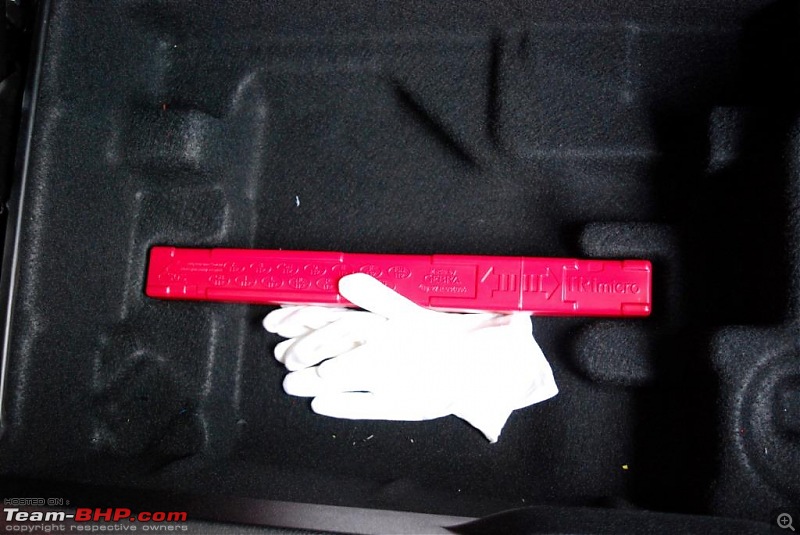
Scissor jack. God help you if you need to use this. Why can't manufacturers give easy to use jacks? The technology in today's cars has reached planet Mars, but the jacks in most vehicles are still stuck in the stone age. The E 350 with us had a much more sophisticated jack which took just a few minutes to set up:
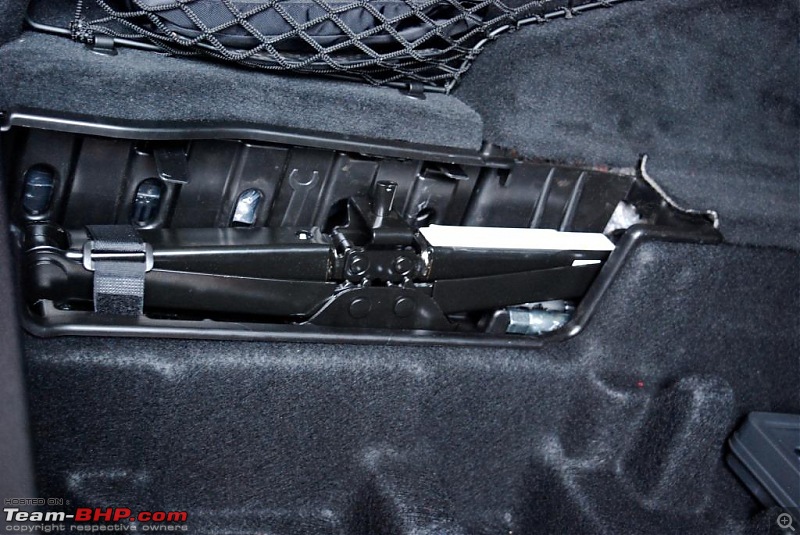
Another fuse box tucked away underneath the cargo area floor:
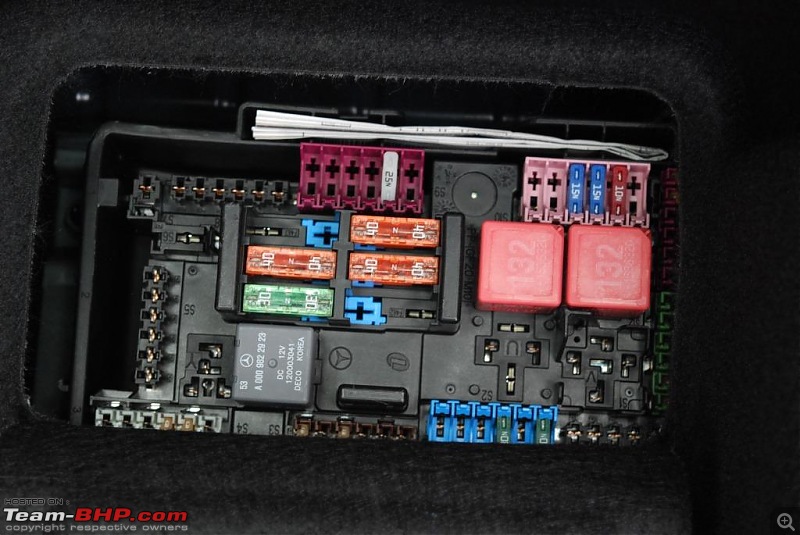

 (26)
Thanks
(26)
Thanks

 (15)
Thanks
(15)
Thanks

 (12)
Thanks
(12)
Thanks

 (11)
Thanks
(11)
Thanks

 (11)
Thanks
(11)
Thanks

 (12)
Thanks
(12)
Thanks

 (29)
Thanks
(29)
Thanks

 (2)
Thanks
(2)
Thanks

 (2)
Thanks
(2)
Thanks
 (1)
Thanks
(1)
Thanks

 (2)
Thanks
(2)
Thanks

 (2)
Thanks
(2)
Thanks

 (2)
Thanks
(2)
Thanks





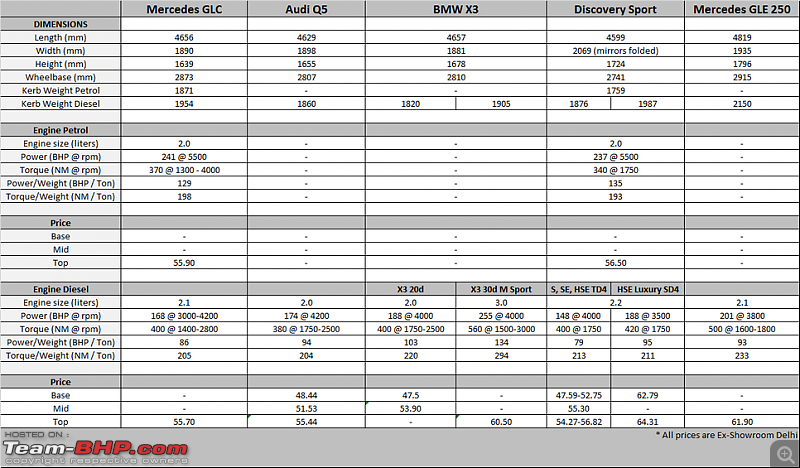

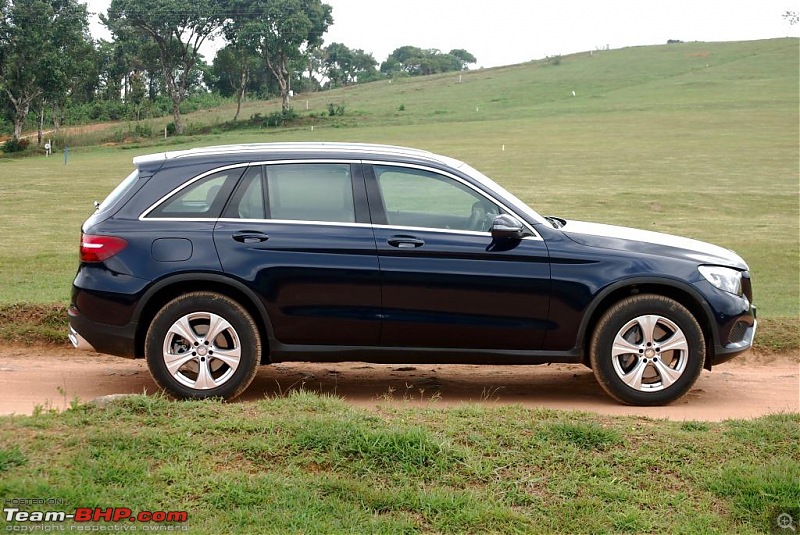

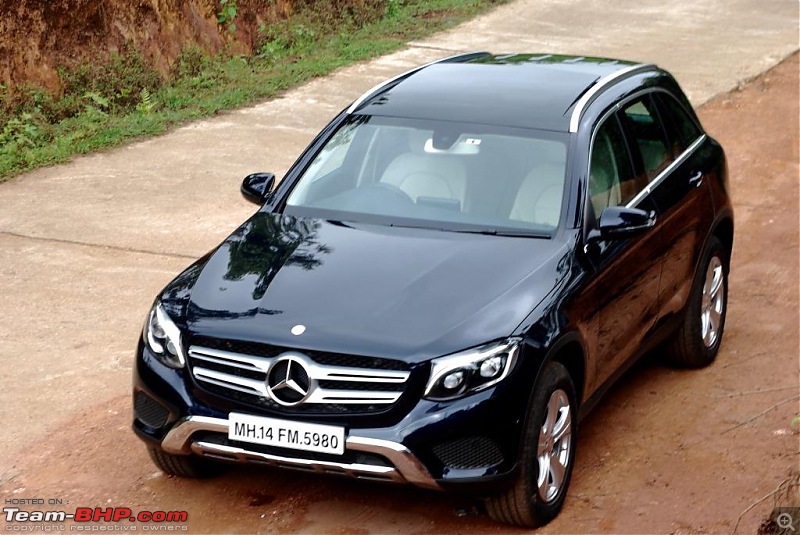
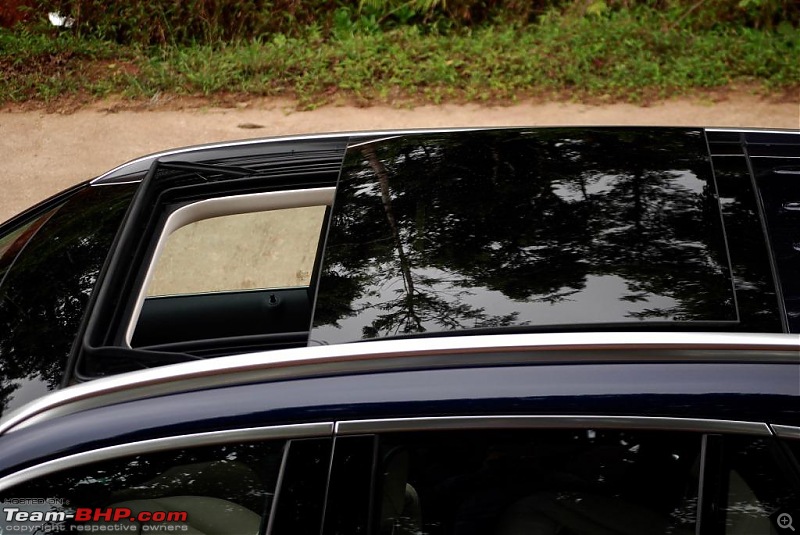
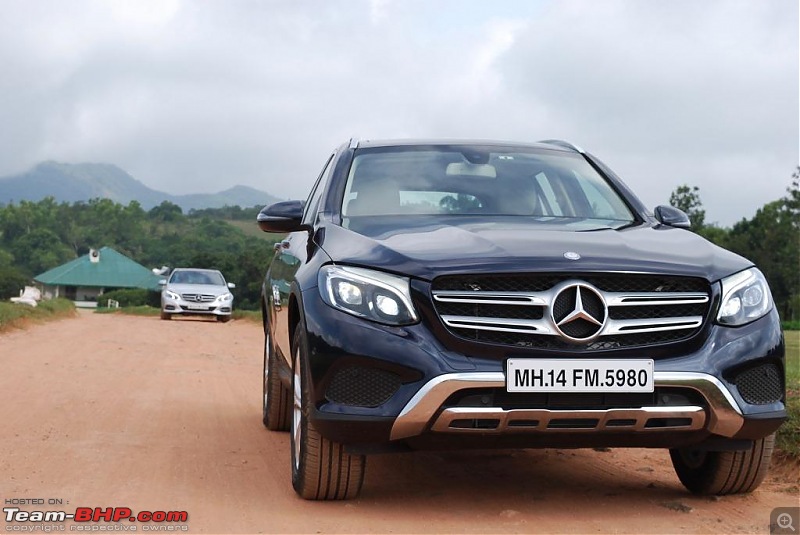

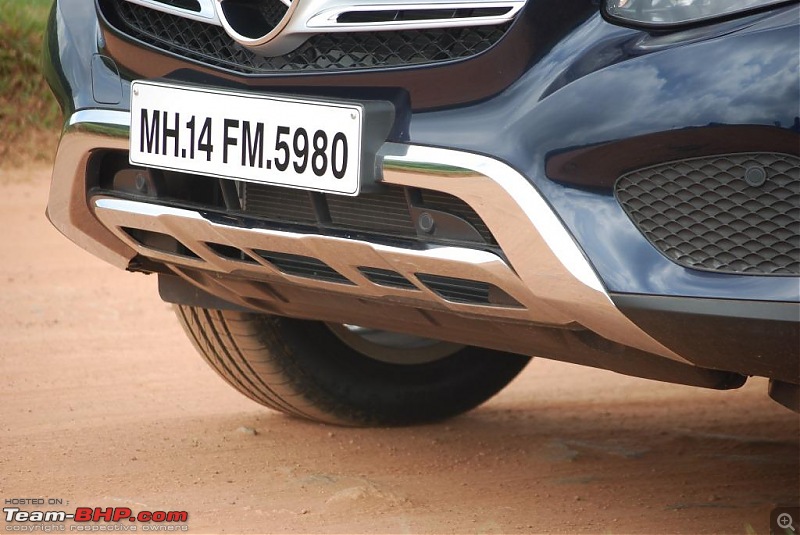

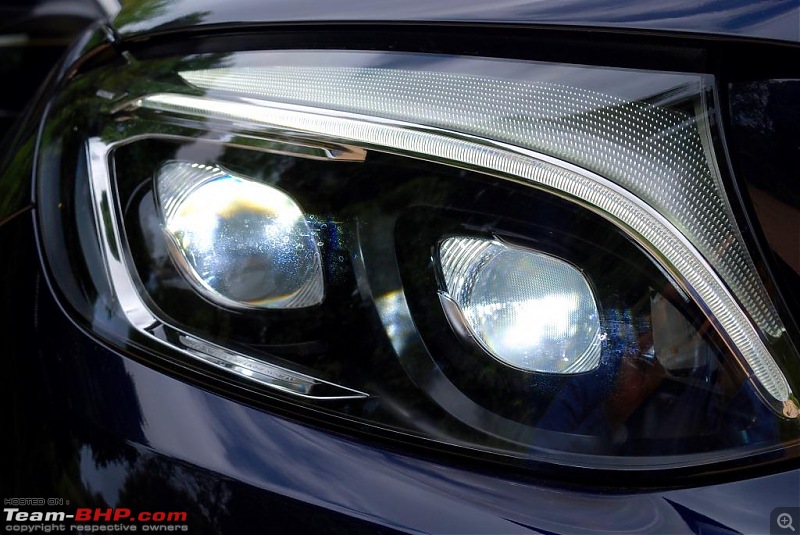
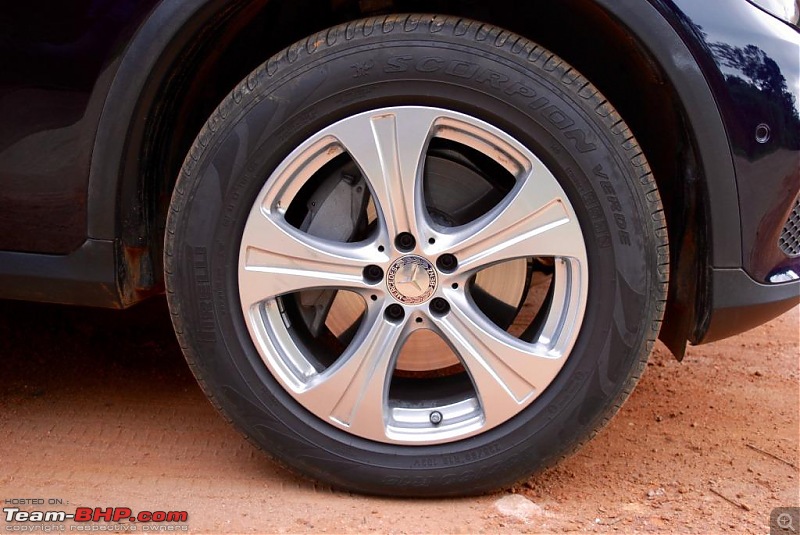
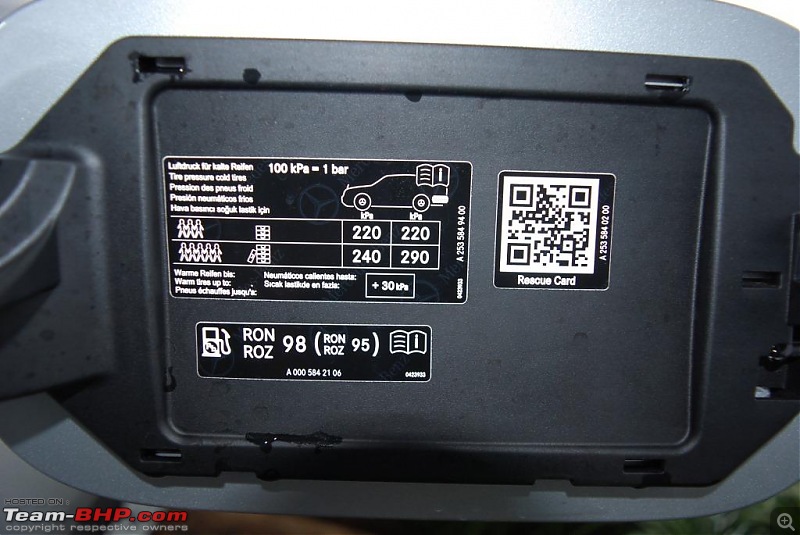


























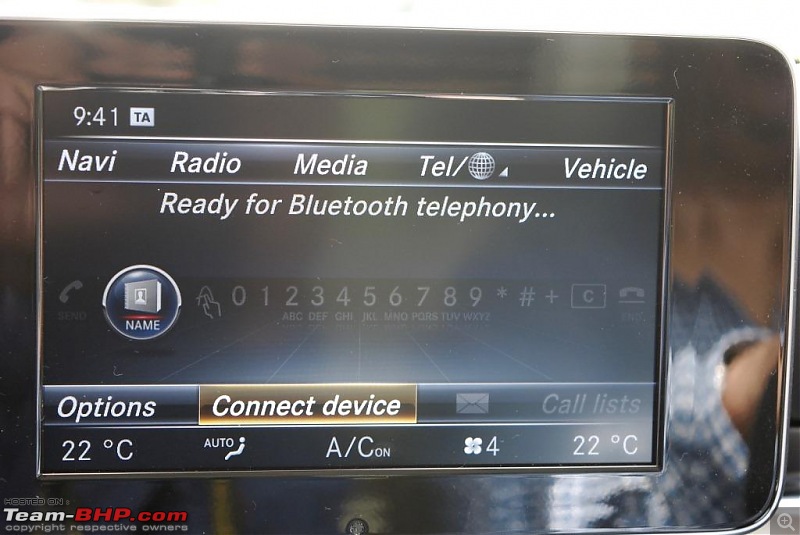
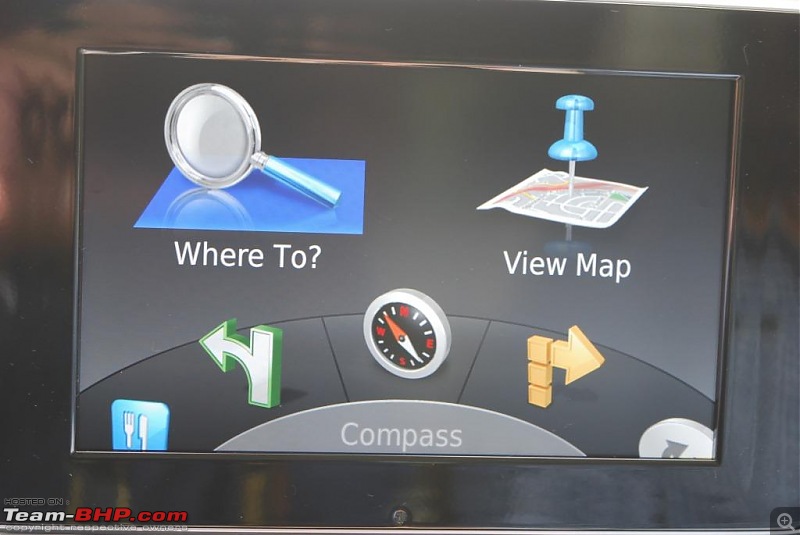
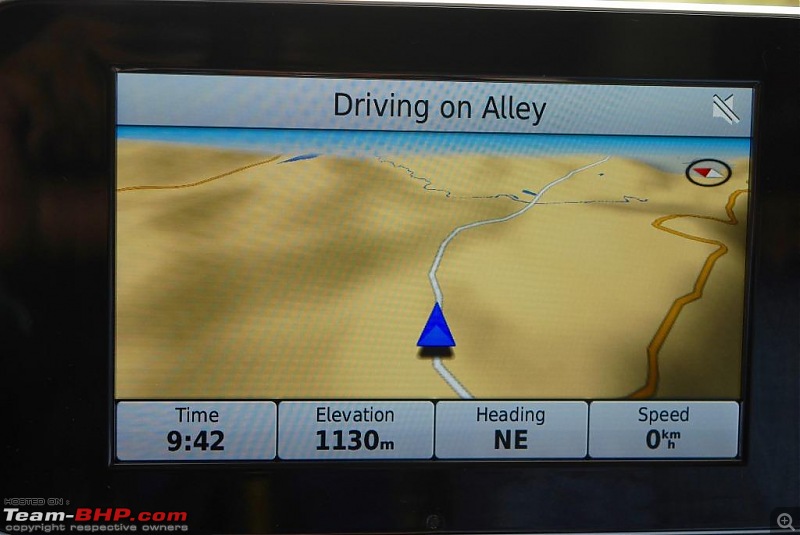

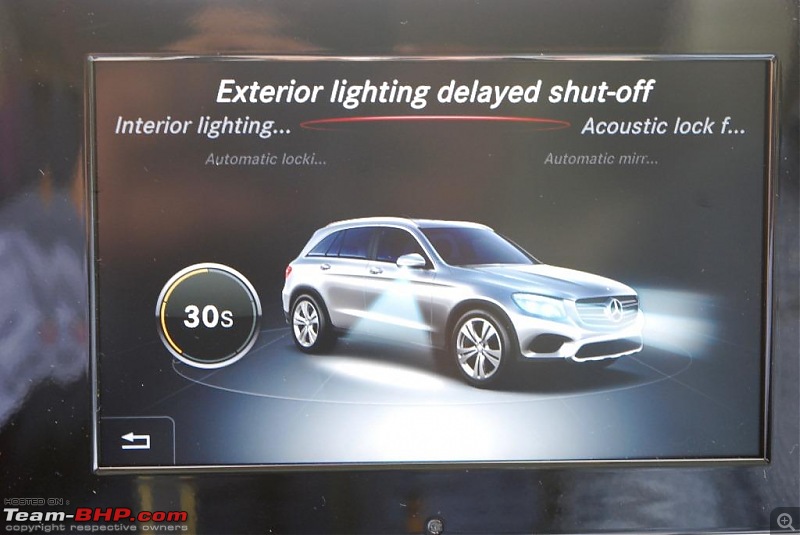
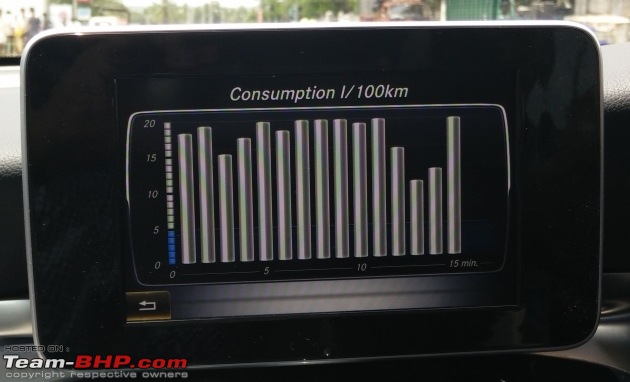
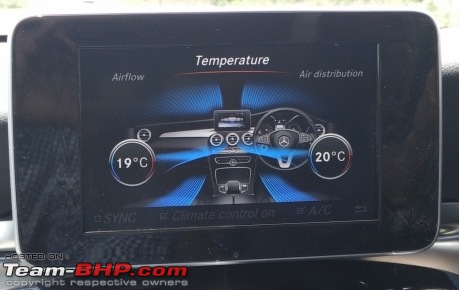
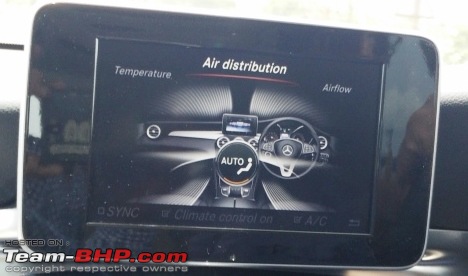
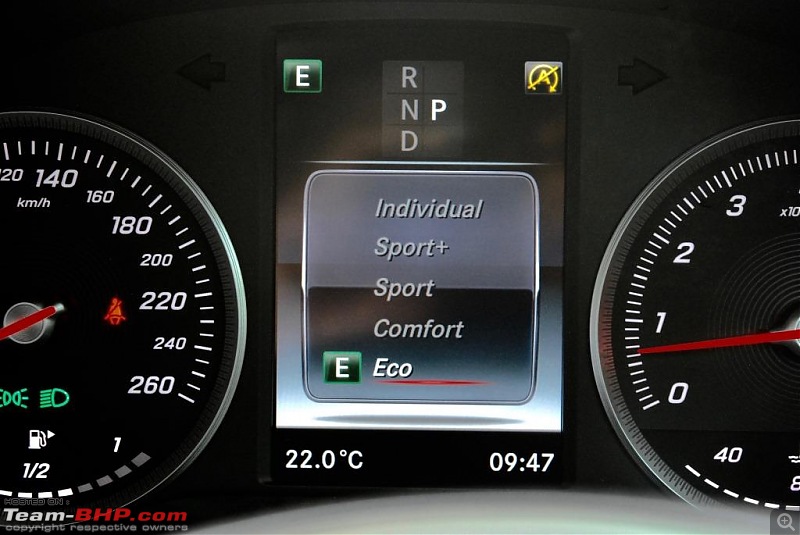

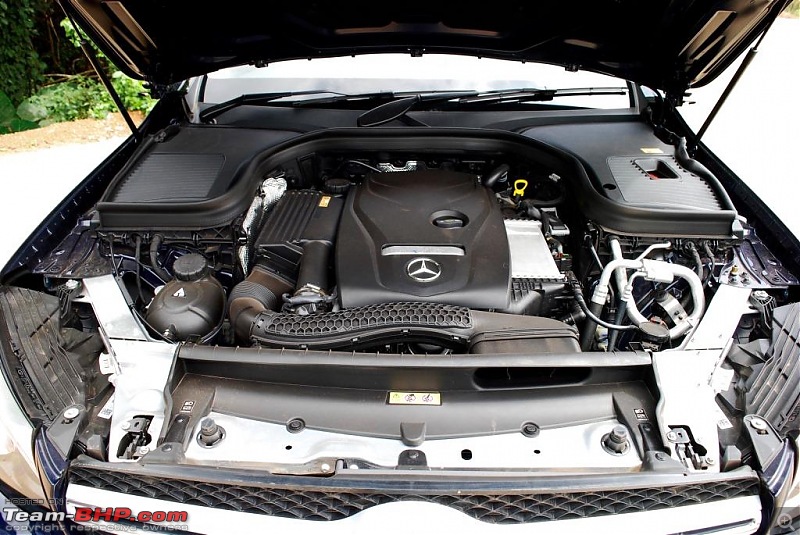
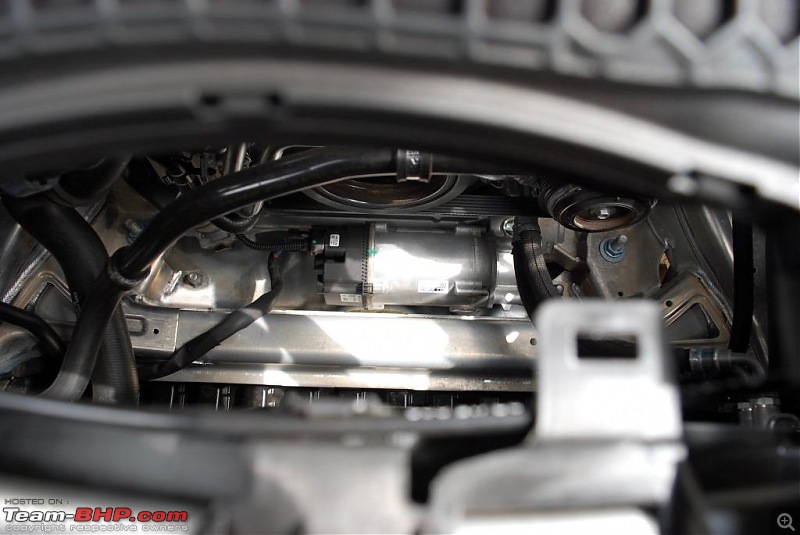
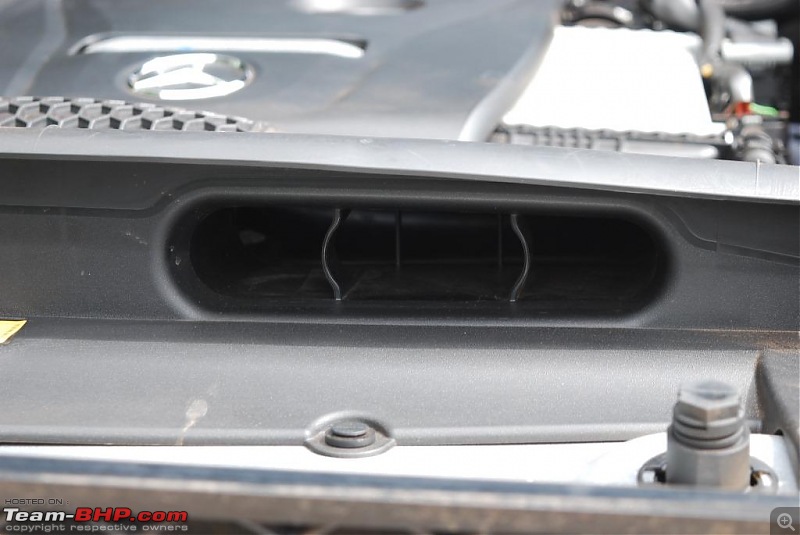
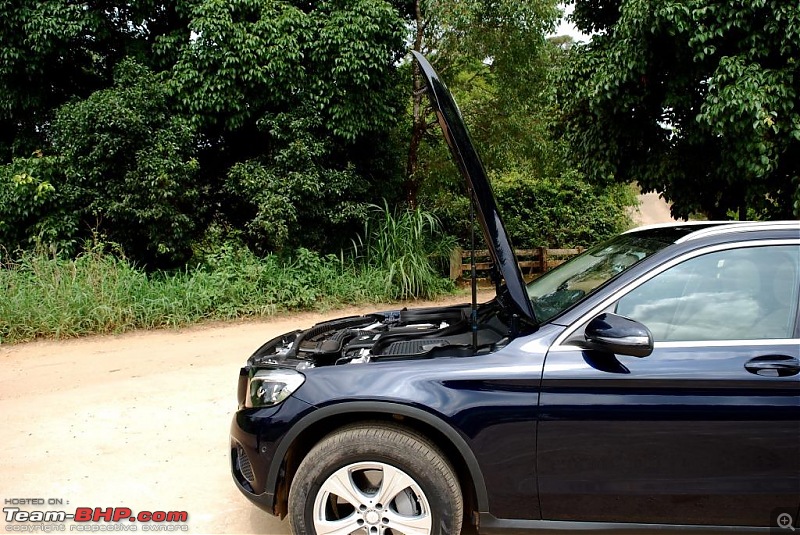
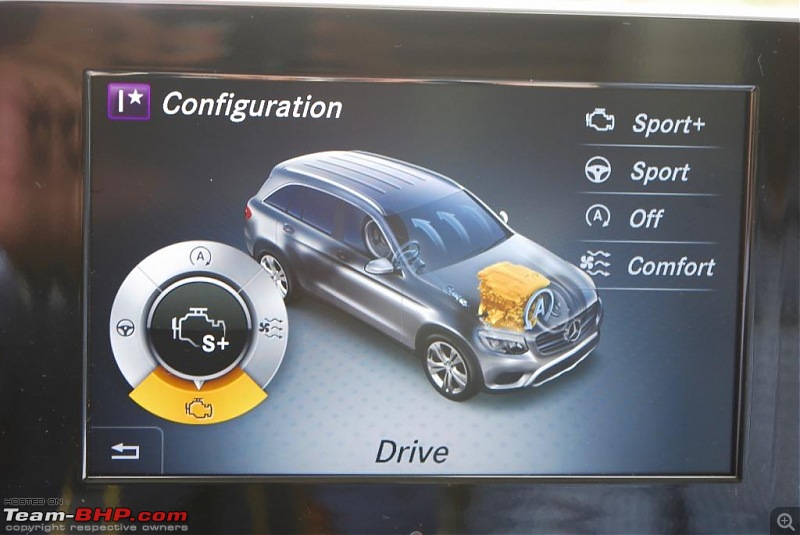
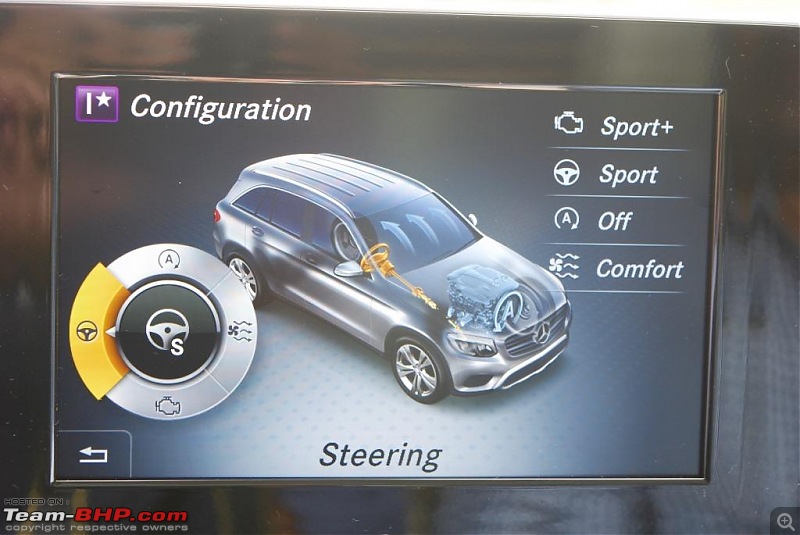
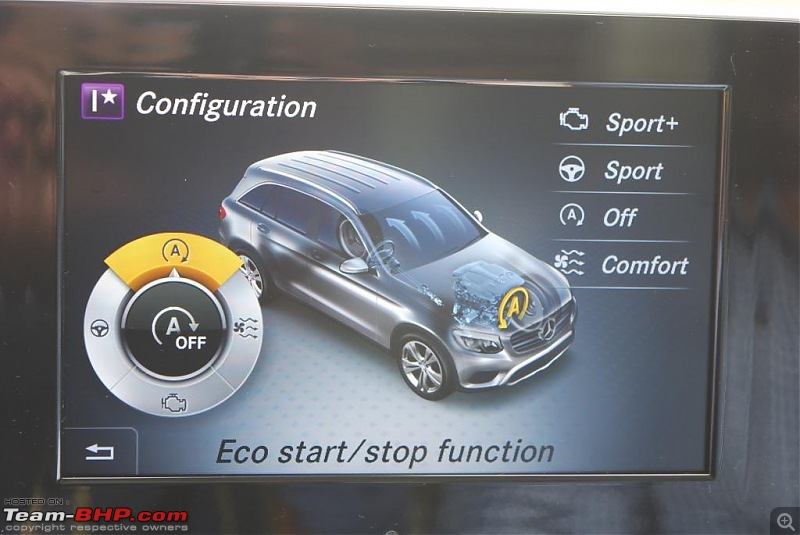

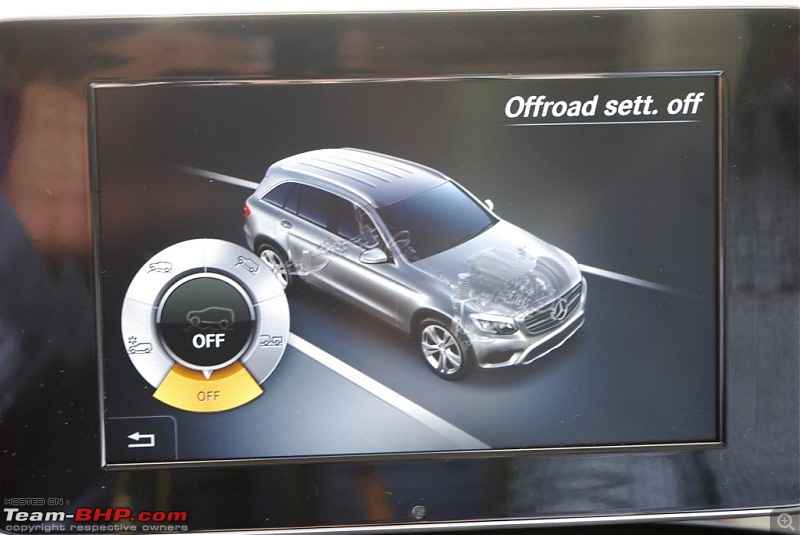

 :
:
